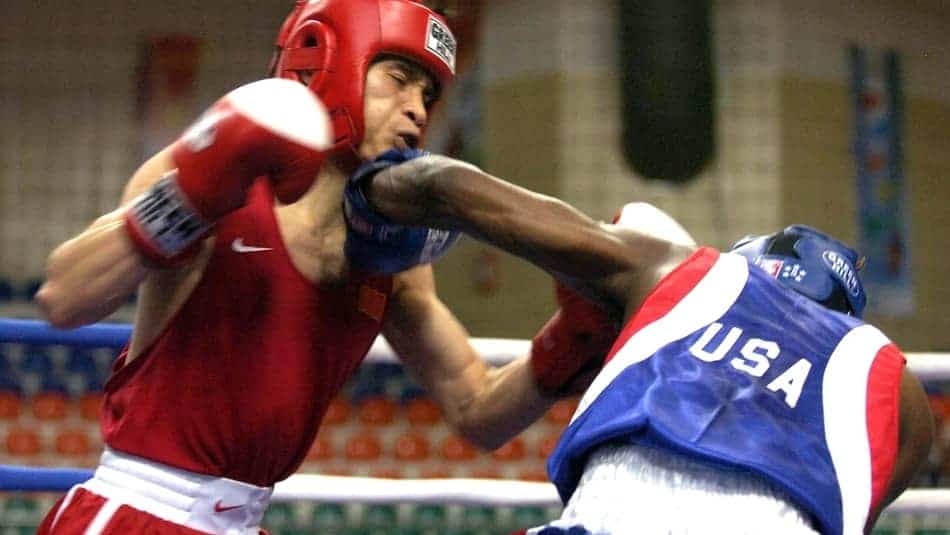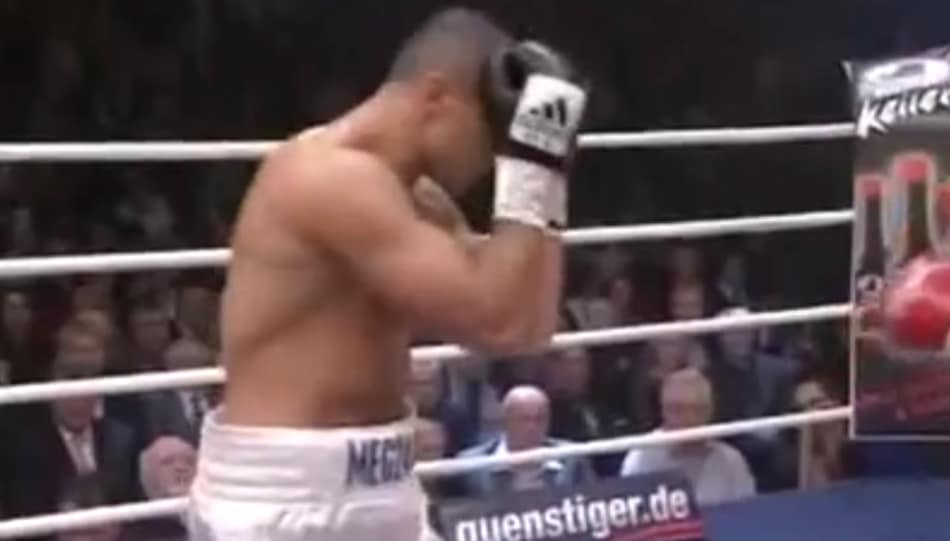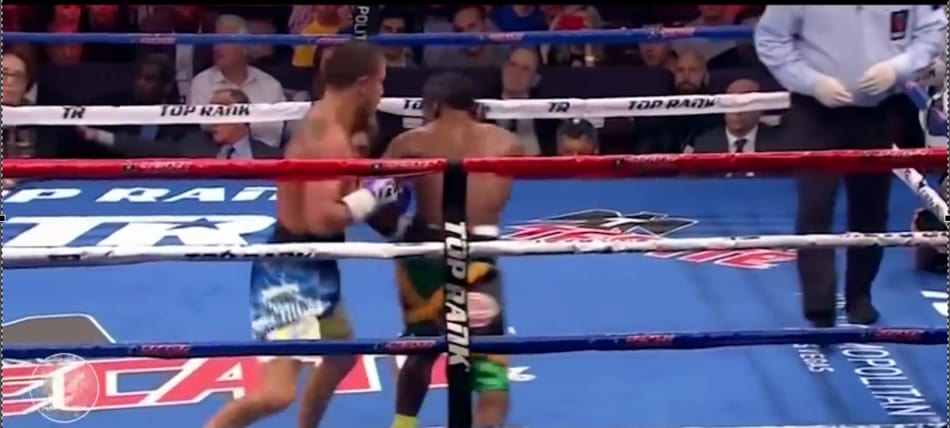
Even if you know nothing about boxing, after you watch several matches, you will notice that the different fighters have different styles. Some of them are more aggressive and have big punching power, while others are more defensive and like to counterattack.
The interesting thing about this is that everyone has a natural preference for which style they want to use, which largely depends on their body type. For instance, if you are a tall fighter with long hands – it’s clear that you will try to maintain a distance from your opponent by using straight punches. But what about the short people who have short reaches?
What is the best boxing style for short fighters? Obviously, there are many different choices you can make when you choosing your style. But the best one for short people is called “Swarmer boxing style”. The swarmers are boxers who fight in close range most of the time. They are pressuring fighters, which most dangerous weapons are the hooks and the short-range uppercuts.
This type of boxers often overwhelm and exhaust their opponents using their tremendous pressure.
Swarmer boxing style
The swarmer boxing style is associated with fighting from the inside, which basically means – short range boxing. This type of boxing is perfect for short fighters because of several reasons:
1. Negate the reach advantage of your the taller boxers. There is nothing more annoying than fighting against a taller guy who just stays at a distance and throws long jabs at your face, while you can’t even reach him. But when you are fighting from the inside, he won’t able to do that. That’s because the taller boxers need space so they can throw their long punches. On the other hand, when your reach is short, you don’t need so much room to catch your opponent, especially with hooks and uppercuts.
2. It helps you deal with faster opponents. Sometimes in a sparring (or in a fight), you just fell that you are better than the other boxer, but you just can’t catch him because of his speed advantage. In such cases, usually, the other boxer just circle around you, throwing not so powerful but fast punches against which is really hard to defend. Well, when fighting from the inside, you can press your opponent in some of the corners or against the ropes and then land some powerful shots.
3. Stop aggressive fighters (and volume punchers). Every time, the aggressive boxer tries to pressure you by throwing flurries, you can enter in a clinch, control him, push him against the ropes and start working on his body or head from there.
4. Overwhelm the defensive boxer. The majority of the defensive boxers are really skilled and fast. They have perfect timing and like to wait for their rivals to attack so they can counter. But that can be really hard when fighting against a swarmer who applies constant pressure. We saw that when Floyd Mayweather fought Marco Maidana. Where Marco (a skilled swarmer) pressed Floyd, who is one of the greatest defensive boxers, against the ropes and just pounded him with overhands.
5. You don’t need much athleticism to be swarmer. While the outside boxing style (fighting from a distance) requires long reach, good speed, and precise timing when fighting like a swarmer you just need a good strategy (which will discuss later in this article) and a lot of practice.
6. It discourages the opponent. Imagine being in the ocean and having weaves crushing on you. Well, you feel similarly when an experienced swarmer presses you against the ropes and starts throwing big combinations on you. This type of fighting beats your opponent not just physically but also mentally.
7. Control the fight. When fighting from the inside you can use clinching to control your opponent. For example, you can prevent him from punching you, if you are hurt after a big shot and need some time to recover. You can also exhaust your rival which later will help you to finish him. Because it’s much easier to knock someone out when he is gassed out.
8. Beat more skilled boxers. The way that swarmers fight isn’t considered to be the most beautiful way of boxing. That’s because it looks brutal and violent. But, sometimes it can help you to beat even more skilled boxers just because they aren’t prepared for such type of fighting. A great example of this is the first fight between Roberto Duran and Sugar Ray Leonard where Roberto drew the skilled outboxer Sugar Ray into a close range fight. There he landed more significant punches and dominate his opponent during the whole fight.
The swarmer boxing style can be effective against almost every other style. And usually, short people are the best swarmers. So after we know that let’s dive into how actually to fight like swarmer:
How to fight like swarmer

There are 4 things that you need to implement in your boxing strategy so you can become a real swarmer:
1. Stance and Guard
If you want to fight from inside, chances are you are going to take some punches while trying to close the distance between you and your opponent. So you need a good guard to protect your head. Here are the best guards for swarmers:
Peek-a-boo guard
Invented by Cus D’amato and used by all of the boxers he coached (including Myke Tyson), this guard protects your head and body really good but also allows you to throw powerful shots.
How to do it:
- Put your gloves on your face – Just below the eyes – don’t block your vision.
- Tuck the chin to your chest
- Turn your hands – Your little fingers need to be beside your nose
- Keep your elbows on your ribs
- Place your right toe under your right shoulder
- Your left heel needs to be positioned under the left shoulder
- Bend your knees and lean your upper body little bit forward
That stance is great for swarmers because it’s really aggressive. It requires moving toward your opponent and waiting for him to throw a punch. As he does that you need to slip it and use that moment to close the gap and land some combinations.
Crossguard
This guard was found by Archie Moore – an American boxer who competed in the heavyweight class. He was an infighter with a very interesting stance. When his opponents were close to him, he stayed almost squared up. His rear hand was placed on his lead shoulder, protecting from head punches while the lead one was on his rear hip so he can block the body shots.
A similar guard was used by Joe Frazier. The only difference was that Joe was leaning his upper body more forward. That way his body was too far from his opponents. Because of that, he wasn’t worried too much about body shots, so he was able to protect his head using both of his hands. He was also very good at bobbing and weaving which helped him to close the distance and start fighting from the inside.
These two guards are very effective for swarmers because they provide great defense for the body and the head when going forward. But they require developing a really well-timed head movement so you can dodge the shots in the right moment.
2. Footwork

It isn’t so easy to close the gap between you and your opponent without taking any damage. The other boxers will try to catch you as you come closer. This will increase the impact of the blow, even more, making it devastating. Here are 6 tips on how to prevent that from happening:
1. Cut the angles – Don’t just chase your opponent because by doing that, you can be easily countered. Try to predict where he will be in the next moment and go there. That way you can catch even faster boxers. For example, if your opponent is circling to your right, make a quick step in this direction and catch him.
2. In and out movement – By moving in and out you will confuse your rival. And when he doesn’t expect, you can spring forward and close the distance. Mike Tyson used similar technique especially in the beginnings of his fights.
3. Mask your steps using punches– Throw light punches at your opponent’s head. Make him worry about them. Meanwhile, step forward and close the distance. Thus you will distract his attention from your legs which will help you to cover the distance, without being spotted.
To do that you can use, for example, a double jab. And if the other boxer is very good at slipping punches, you can aim at his chest. That way he won’t slip them so easily, so he will block the shots. And you can use that moment to close the gap.
4. Pressure and wait for the shots – Move forward and be ready to slip or to duck under the punches. That’s what boxers such as Mike Tyson or Joe Frazier did all the time. For straight shots, you can lean back and go under them. And for hooks, you can duck under them and then go forward.
5. Catch the hand and pull it – You can catch your opponent’s hand, using your arm, after he throws a punch, and then pull him. That is another effective way of closing the distance. Just make sure you aren’t grabbing the hand with your glove because that’s illegal.
6. Square up when the other boxer is on the ropes. Use more squared up stance when your rival is close to the ropes. That way it will be much harder for him to escape. And also you can land powerful punches with both hands.
3. Combinations
Once you close the distance is time to land powerful shots. Here are some great combinations you can use to catch your opponent off guard when fighting from the inside:
Lead hook (body)>Lead hook (head)> Rear hook>Lead uppercut
Go to first the body and then to the head. That way you will make the other fighter lower his guard (to protect the body) which will make him, vulnerable for punches to the head. Also, don’t throw the first 1-2 shots with full power. Their purpose is just to distract your opponent’s attention. The last 2 punches are the ones that should hurt him the most.
Jab>cross>lead hook to the body
That combination is the opposite of the first one. Here we are aiming at the body. Throw the first tho punches with roughly 60-70% of your power and then land a powerful lead hook to the body.
Jab>Lead uppercut (body)>Overhand to the head
The overhand punch is really effective against taller fighters. It’s similar to the hook but, unlike the hook, it isn’t parallel to the ground. The punch comes over the opponent’s hands (hence the name) and it’s aimed at his head.
With this combo, you want to land a powerful overhand, catching your rival off guard. To do it, start with a jab to the head, followed by an uppercut to the body (with the same hand); and then throw a powerful right overhand (or left overhand if you are a southpaw).
Rear uppercut (body)>Rear uppercut (head)>Lead hook
This can be a really dangerous combination. First, you attack the body, then you land a powerful uppercut to the head (the punch should pass between your opponent’s hands). And finally, you catch the other boxer with a hard lead hook to the head.
Push against the ropes>multiple hooks to the body>rear hooks to the head
When you press your opponent against the ropes, you can start working on his body. As I already mentioned, you need to be squared up, so he can’t escape so easily. After you hold a good position, start by throwing left and rights hooks to the body (3-4 punches) and finish the combination with a rear hook to the head. It’s a really cool combo.
Tips:
- Try to get an angle advantage when fighting from the inside. That means to go sideways to your opponent or even behind him. That way you will be well protected from punches and you can land shots from many different directions.
So always look for a better angle and don’t stay mirror the other boxer. If it’s necessary, you can switch stances. Don’t be afraid of going into a southpaw stance (or into an orthodox if you are natural southpaw) if that will help you to position yourself better.
- Put the weight on one of your legs while punching. It isn’t necessary to shift the weight between your legs, like when fighting from a long distance. That will just slow you down. When fighting from the inside, we aren’t focusing so much on the power but more on the volume. Which leads to the last tip:
- Try to throw more punches than your opponent. If he starts throwing flurries, don’t just cover up and wait to land counters. Land some shots while he is punching you. Brawl if it’s needed. Otherwise, the judges may score him more points even if you are the one who applies the pressure.
4. Clinch control
When you fighting from the inside, you have two options. The first one is to explode with powerful combinations – Myke Tyson style. By doing that you can land really good shots but you also risking taking some.
The other option is to control your opponent in the clinch using your hands and your weight. That way you will prevent him from landing big blows, but you also won’t be able to punch hard, just because you are using your hands more for controlling than for punching.
Fighters such as Roberto Duran used this type of infighting with great efficiency. You can use it when, for example, you want to slow down the fight. That can happen when you are hurt bad and need some time to recover. Another situation where you can use this tactic is when you want to stop, an aggressive opponent, from throwing volume punches at you.
Of course, you can mix it up. For instance, you can use the clinch control to drive your opponent to the ropes and from there you can explode with hard combinations.
To be able to control your opponent in the clinches can be really helpful. Here are my best tips on how to do it:
Go for Over/Under Hooks
As I already mentioned, you can use your hands not only for punching but also for controlling the other boxer. That way you can stop his punches before they are even thrown or drive him in the direction you want. You can do that by using overhooks or underhooks.
An overhook is a hold where you put your arm over the other boxer’s arm. It’s used in clinching to prevent your opponent from throwing punches. Go for overhooks when you want to stop an aggressive opponent.
On the other hand, when going fo underhooks you need to put your arm under your opponent’s arm. That way he will be able to use his arms, but you have better control of his body. Using this type of hooks you can easily drive your opponent to the ropes.
The last variation of these clinch holds is called over-under hook. There one of your arms is OVER your opponent’s arm while the other one is UNDER the opposite arm. When you get over-under hooks, place your head on the shoulder of your opponent where you got the overhook. That way he won’t be able to hit you.
Pushing
When pushing your opponent, don’t just try to be the stronger guy, because you will spend too much energy trying to do that. Instead, wrestle him by using better positioning and leverage.
You can do that by pushing him, using to only your hands, but your whole body. Use the legs the hips, your core, and even your head when trying to push him back. Similarly to when throwing punches and you are using your whole body to add more power in the punch.
Also if your opponent is stronger than you, you can pivot and push him from an angle. That way you will use his own force against him and get him off balance.
Head positioning
You can use your head to put pressure on your opponent. To do that your head always needs to be above his head. Ideally, his head needs to be on your chest where you can control it easily.
That’s why, even if you are shorter than your opponent, avoid putting your head on the other boxer’s chest. Because when your head is there, he can push it down or get you in a headlock. So try to place it on his shoulder and push him from there.
Control the head
You can use a headlock to control the other boxer’s head. That way we won’t be able to see you and throw accurate shots. You can do that by putting your arm over his neck and pushing the head down. From there, you can turn your opponent, or drive him in the direction that you want.
How to escape the headlock
If your opponent gets you in a headlock, don’t try to pull your head back. Instead move if up. That way you will break the lock without much effort.
Final tips on clinch controlling:
- Always try to work in the clinch, don’t just tie up, otherwise, the referee will break you up.
- Manipulate your opponent’s body and his balance – The one with the better balance will win the inside fight. So always try to get your rival off balance. That way he won’t be able to throw punches or to protect himself effectively.
- Be relaxed in the clinch – the more relaxed you are, the make worried your opponent will become. So don’t panic, follow the gameplan – drive him to the ropes and then start landing powerful combinations.
What is needed to be a good swarmer
There are 5 things without which you just can become a good swarmer:
- Good chin – You will probably take lots of shots so a good chin is needed
- Good footwork – So you can close the distance quickly
- Slipping ability – That’s crucial when it comes to closing the gap between you and the opponent. And the only way to develop your slipping ability is through repetition (lots of repetition)
- Basic wrestling skills– Having some basic wrestling skills will really help you in the clinches. Some extra strength will be useful also.
- Good endurance – If your endurance isn’t on point, you will gas out very quickly in all these clinches.
Examples of successful swarmers
Some of the most famous swarmers are Gennady Golovkin (GGG), Roberto Duran, Mike Tyson, and Joe Frazier. I highly recommend watching some of their fights (or just highlights) so you can understand the swarmer style better.
Exercises
When it comes to slipping and bobbing and weaving, you need to time the punch perfectly, and also to know in which direction to slip or bob and weave so you can dodge it. The exercises I recommend to improve that critical skill are speed bag and double end bag drills. When hitting these bags wait for them to come back at you and then move your head to avoid them. That’s really cool exercise which can improve your timing dramatically.
Another exercise that can really help you to develop great slipping and bobbing and weaving skills is, of course, the sparring. So try the tactics you learned here in your next sparring session.
The other important aspect of your preparation is conditioning. To be a good swarmer you need to do strength exercises (so you can have better clinch control) but also endurance drills. By focusing on these factors, you will be able to control your opponent and destroy him with powerful combos during the whole fight.
To increase your strength, you can do some free weight exercises such as pull-ups. And you can also do heavyweight lifting – bench press, deadlift, etc.
To improve your endurance I recommend interval training – quick sprints with little rest between the intervals. The distance your run shouldn’t be more than a half a mile.
And of course, you will also need to do some heavy bag work so you can learn the combinations.
Counters of the style
No style is perfect and the swarmer one isn’t an exception. Here are some types of fighters that can make you a lot of trouble if you are a swarmer.
Sluggers
The sluggers or the brawlers are big punchers with a knockout power who love the exchanges. They can be a problem for the swarmers because they are usually big and strong guys, so you can’t control them easily.
For instance, they can use their strength advantage to push you back every time you try to come in. A great example of that were the fights between George Foreman and Joe Frazier where Joe (swarmer) has a really hard time getting inside of Foreman, (who was a brawler).
Fast outboxers
Usually, the swarmers can beat the outboxers but when the outboxer is too fast and has much better footwork than you, it’s really hard to catch him. He can just circle around and throw jabs to keep you are a distance. Even if he can’t knock you out, he will probably win by points.
Boxers with good balance who can wrestle better than you
The basic wrestling skills are required if you want to control the other fighter in the clinches. And when he is better than you and have better balance, that can really ruin your whole gameplan.
